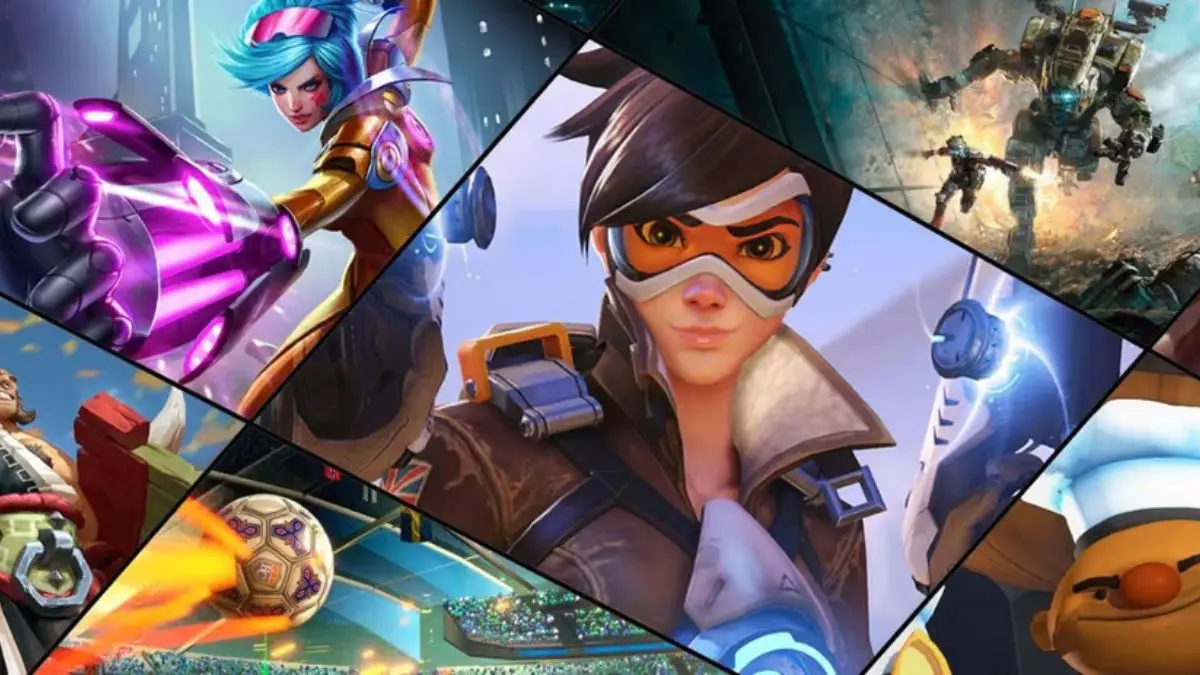Multiplayer online games have transformed the gaming landscape, bringing people together from across the globe to compete, collaborate, and create. From humble beginnings in text-based virtual environments to expansive open worlds hosting millions of players, the journey of multiplayer online games is rich with innovation and cultural significance. This blog explores the History and evolution of multiplayer online games, highlighting key milestones, pivotal games, and the technology that made it all possible.
The Dawn of Multiplayer Gaming: The Early Years
Mainframe Era: The Birth of Multiplayer
The concept of multiplayer games began on mainframes in the 1970s, where students and researchers experimented with the limited computing power of the time.
- Key Games:
- Spacewar! (1962): One of the first computer games, allowing two players to battle in space.
- MUD1 (1978): The first-ever Multi-User Dungeon, marking the genesis of text-based multiplayer gaming.
Features of Early Multiplayer Games
- Text-based Interaction: MUDs were primarily text-based, requiring players to type commands to interact with the game world.
- Local Multiplayer: Games like Spacewar! were played on the same machine, lacking internet connectivity.
| Era | Key Game | Platform | Features |
|---|---|---|---|
| 1960s-1970s | Spacewar! | PDP-1 | Local multiplayer, competitive gameplay. |
| Late 1970s | MUD1 | Mainframes | Text-based, online multiplayer. |
The 1980s: The Rise of LAN and Online Connectivity
Introduction of LAN-Based Games
The 1980s witnessed the rise of local area networks (LANs), which enabled multiple computers to connect and host multiplayer sessions.
- Key Games:
- Snipes (1983): A precursor to modern first-person shooters, often cited as one of the first LAN games.
- Maze War (1974): Evolved in the 1980s with network support, allowing multiplayer over ARPANET.
Commercial Online Services
Companies like CompuServe and AOL provided early online gaming platforms, connecting players across the United States.
| Era | Key Game | Platform | Features |
|---|---|---|---|
| Early 1980s | Snipes | PC LAN | First LAN multiplayer game. |
| Mid 1980s | Maze War | ARPANET | Early networked first-person shooter. |
The 1990s: Birth of the Modern Multiplayer Era
The Internet Revolution
The internet revolutionized multiplayer gaming in the 1990s, enabling global connectivity and creating the foundation for Massively Multiplayer Online (MMO) games.
- Key Games:
- DOOM (1993): Pioneered online multiplayer deathmatches.
- Ultima Online (1997): One of the first MMORPGs, introducing persistent worlds and complex player interactions.
Technological Innovations
- Dedicated Servers: Allowed stable connections for online multiplayer.
- Voice Communication: Tools like Roger Wilco introduced voice chat to enhance collaboration.
| Era | Key Game | Platform | Features |
|---|---|---|---|
| Early 1990s | DOOM | PC | Online deathmatches, modding community. |
| Late 1990s | Ultima Online | PC | Persistent world, player economies. |

The 2000s: Mainstream Multiplayer Gaming
MMORPG Golden Age
The 2000s were marked by the popularity of MMORPGs, with games like World of Warcraft (2004) redefining the genre.
- World of Warcraft (2004):
- Set new standards for player engagement.
- Became a cultural phenomenon with millions of active subscribers.
Rise of Console Multiplayer
The introduction of broadband internet enabled consoles to join the multiplayer revolution.
- Key Games:
- Halo 2 (2004): Brought online multiplayer to the Xbox Live platform.
- Call of Duty 4: Modern Warfare (2007): Popularized online multiplayer shooters on both PC and consoles.
| Era | Key Game | Platform | Features |
|---|---|---|---|
| Early 2000s | World of Warcraft | PC | Social guilds, raids, persistent worlds. |
| Mid 2000s | Halo 2 | Xbox Live | Online multiplayer for consoles. |
| Late 2000s | Call of Duty 4 | Multi-platform | Competitive matchmaking, leaderboards. |
The 2010s: The Era of Cross-Platform and Battle Royale
Cross-Platform Play
The 2010s saw the rise of cross-platform play, breaking down barriers between PC, console, and mobile players.
- Key Games:
- Minecraft (2011): A sandbox game with universal appeal and cross-platform compatibility.
- Fortnite (2017): Revolutionized the industry with its battle royale mode and cross-play support.
Esports and Streaming
Multiplayer games became a cornerstone of esports, with platforms like Twitch and YouTube Gaming giving players and audiences a shared space.
| Era | Key Game | Platform | Features |
|---|---|---|---|
| Early 2010s | Minecraft | Multi-platform | Creative multiplayer, cross-play. |
| Late 2010s | Fortnite | Multi-platform | Battle royale, live in-game events. |

2020s: The Future of Multiplayer Gaming
Virtual Reality and the Metaverse
Virtual reality (VR) and the concept of the metaverse have brought new dimensions to multiplayer gaming.
- Key Games:
- VRChat (2017): Focused on social interaction in virtual spaces.
- Roblox (2006, evolving): Continues to grow as a platform for user-generated multiplayer experiences.
AI and Procedural Generation
Games now incorporate AI to create smarter NPCs and use procedural generation to offer endless replayability.
Decentralized Gaming
Blockchain technology is enabling new forms of multiplayer interaction, including play-to-earn models and decentralized servers.
| Era | Key Game | Platform | Features |
|---|---|---|---|
| Early 2020s | VRChat | VR Platforms | Immersive social experiences. |
| Present | Roblox | Multi-platform | User-created content, metaverse potential. |
The Impact of Multiplayer Gaming on Culture
Multiplayer online games have not only entertained but also shaped digital culture:
- Social Interaction: Games like Among Us and Animal Crossing: New Horizons became social hubs during the pandemic.
- Cultural Events: In-game concerts, such as Travis Scott’s Fortnite performance, blur the line between gaming and entertainment.
Also Read: Most Powerful Street Fighter Female Characters



